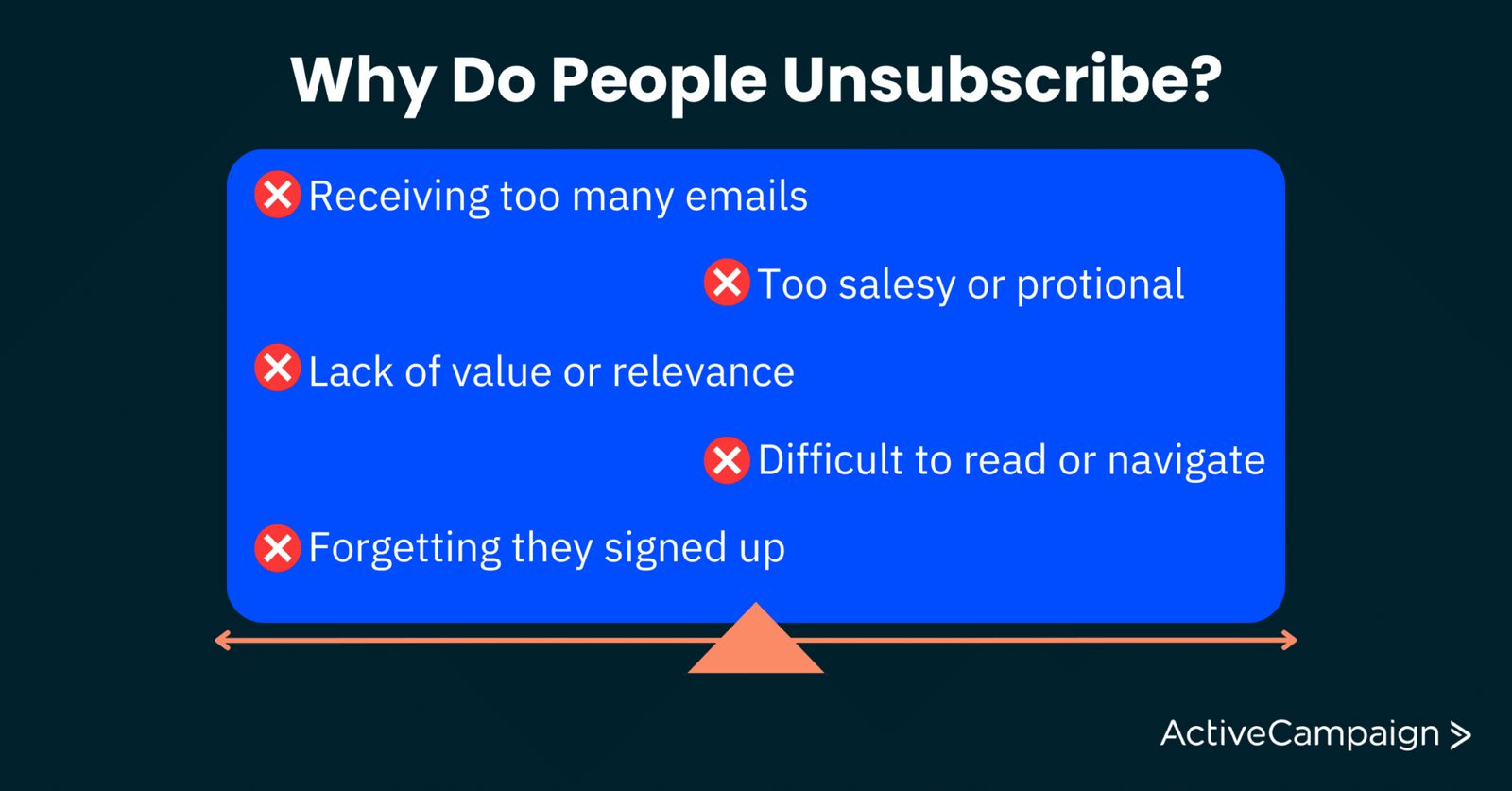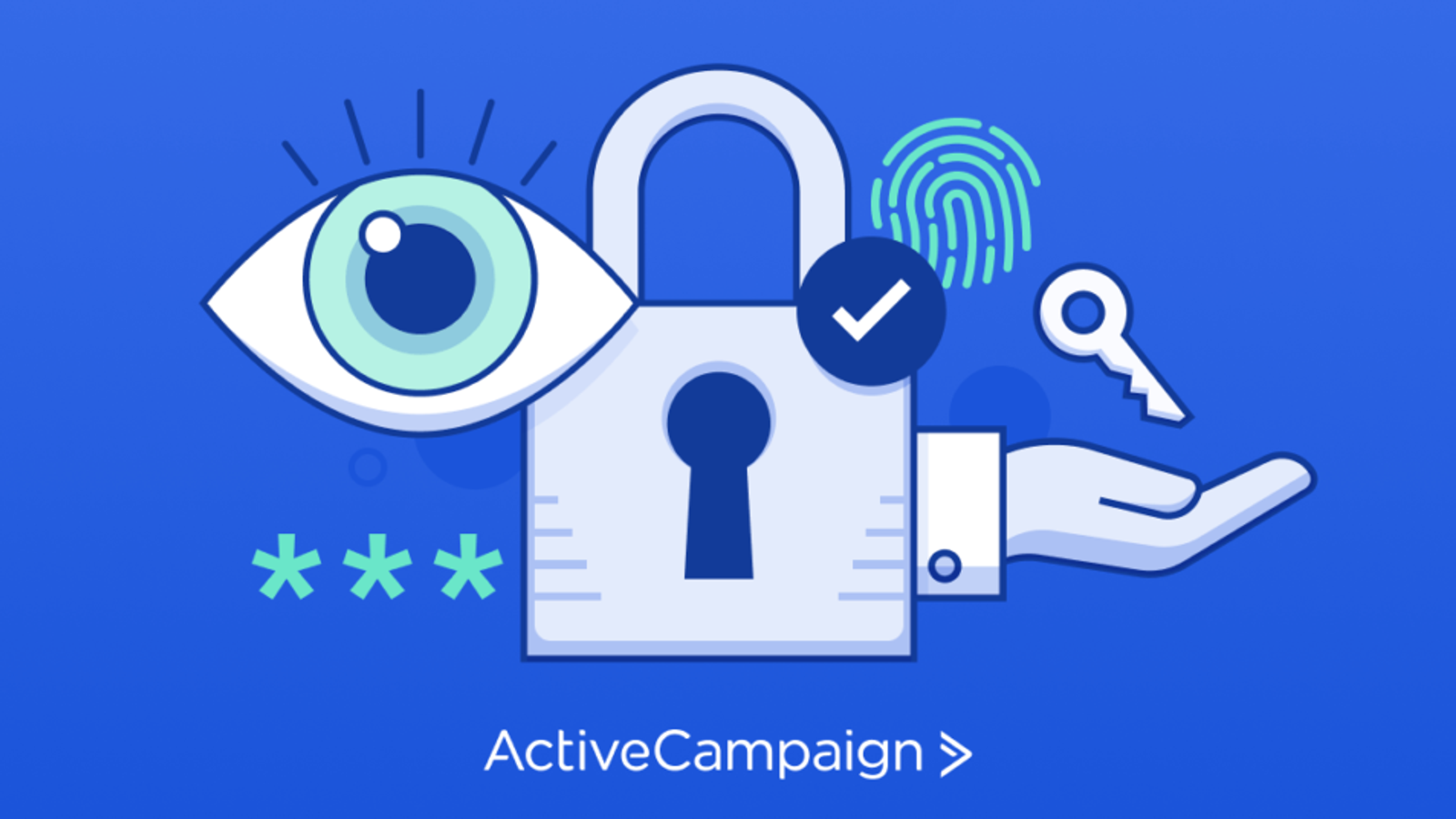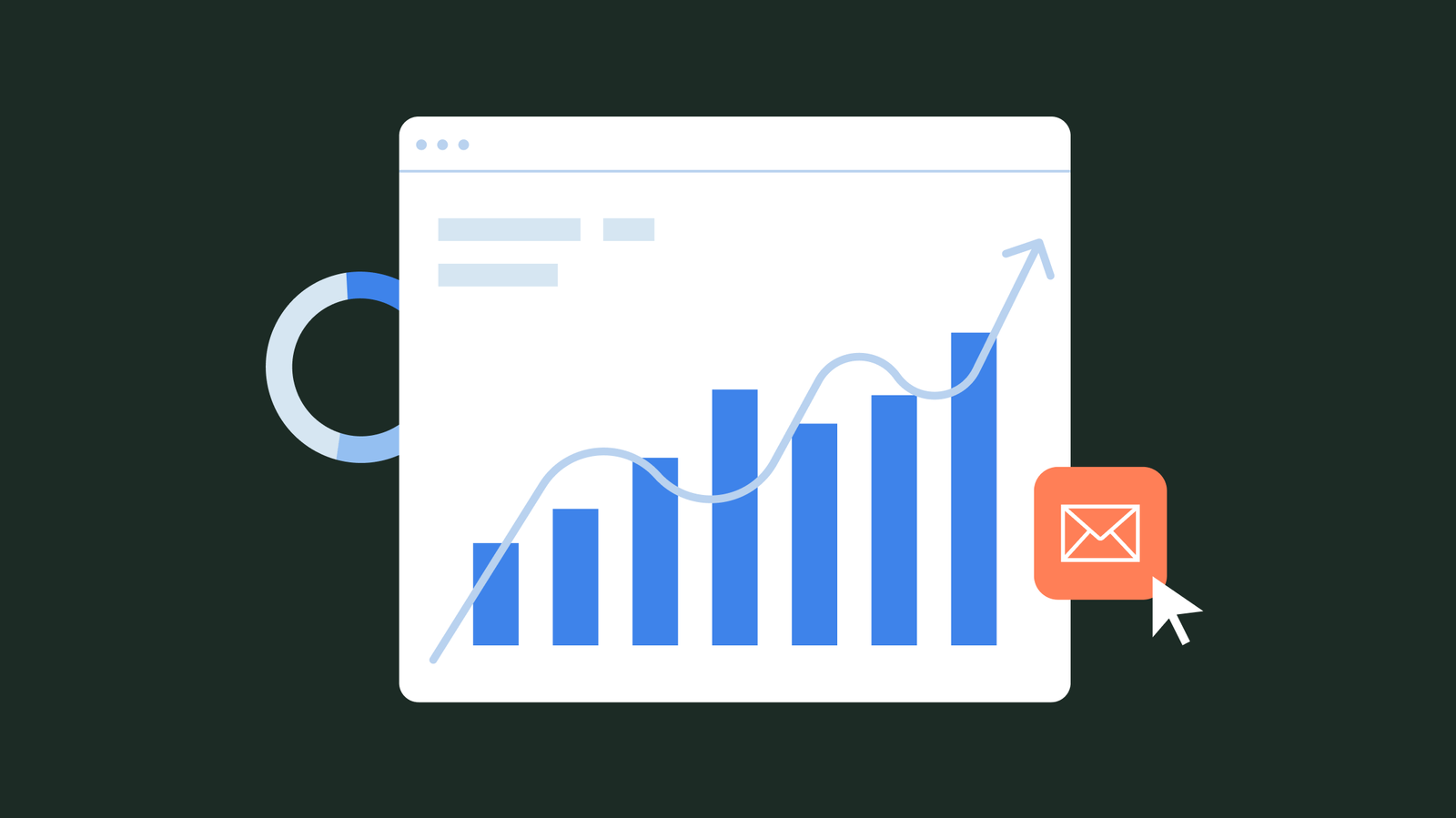Email marketing remains one of the most effective ways to reach customers, nurture leads, and ultimately drive sales. However, the success of your email marketing efforts hinges on your ability to keep subscribers engaged and maintain a healthy email unsubscribe rate. In this blog post, we'll explore the importance of unsubscribe rates, understand their impact on your email campaigns, and provide actionable strategies for reducing your unsubscribe rate and achieving better results.
Table of contents
Understanding unsubscribe rate
The unsubscribe rate is the percentage of users opting out of your email list by clicking the unsubscribe link. This metric is crucial in understanding how well your email campaigns resonate with your audience and can indicate areas where your content or strategy may need improvement.
Industry benchmarks and average unsubscribe rates
Understanding industry benchmarks for unsubscribe rates is essential in assessing the performance of your email campaigns. While benchmarks vary depending on factors such as your industry and target audience, aiming for an average email unsubscribe rate below 0.5% is generally recommended. Unsubscribe rates higher than this can indicate issues that need addressing, such as irrelevant content or excessive email frequency.
Unsubscribe rates across different industries

To provide a clearer picture of how unsubscribe rates can differ across various industries, here are some examples of industry-specific benchmarks:
- Ecommerce: Unsubscribe rates for ecommerce businesses typically range between 0.1% and 0.3%. As the ecommerce industry relies heavily on email marketing for promotions and customer retention, it's crucial to maintain a low unsubscribe rate to ensure continued engagement with potential and existing customers.
- Health and Wellness: The health and wellness industry sees unsubscribe rates between 0.3% and 0.6%. Since subscribers in this industry often seek personalized content and advice, it's essential to tailor your emails to their specific needs and interests to keep the unsubscribe rate low.
- Nonprofit Organizations: Nonprofit organizations can expect unsubscribe rates between 0.1% and 0.3%. Supporters of nonprofit organizations are typically more invested in the cause and less likely to unsubscribe. However, providing valuable content and updates to maintain their interest and support is still important.
- Software and Technology: The software and technology industry experiences unsubscribe rates from 0.2% to 0.4%. As this sector often deals with complex and specialized information, it's crucial to create content that caters to your audience's level of expertise and interests to avoid high unsubscribe rates.
- Financial Services: Unsubscribe rates in the financial services industry range between 0.2% and 0.4%. Since financial information can be sensitive and time-sensitive, providing relevant, accurate, and timely content is vital to keep your subscribers engaged.
These examples demonstrate that unsubscribe rates can vary significantly across different industries. By understanding the specific benchmarks for your industry, you can set realistic goals and identify areas where your email marketing strategies may need improvement. Remember that while these benchmarks provide a useful reference, the ultimate goal is to continually optimize your email campaigns and minimize your unsubscribe rate for better results.
Why do people unsubscribe from emails?

There are several reasons why recipients may choose to unsubscribe from your emails. Understanding these reasons can help you adjust your strategy and improve subscriber retention. Some common reasons include:
- Receiving too many emails: Overloading your subscribers' inboxes can lead to frustration and ultimately cause them to unsubscribe. Don’t let your reader regret giving you their email address. Maintaining a consistent and appropriate sending frequency is essential for keeping your audience engaged.
- Perceiving a lack of value or relevance in the content: If your subscribers feel that your emails do not provide value or relevance to their needs, they are more likely to unsubscribe. Ensure your content is tailored to your audience and provides valuable information, insights, or solutions.
- Feeling that the emails are too salesy or promotional: While promotional emails are necessary, subscribers may become disenchanted if they feel they're constantly being sold to. Balance promotional content with valuable information and insights to maintain subscriber interest.
- Experiencing difficulty reading or navigating the email design: A poorly designed email can be difficult to read and navigate, leading to frustration and unsubscribes. Prioritize mobile-friendly, accessible email designs that provide a seamless user experience.
- Forgetting they signed up for your mailing list in the first place: If a subscriber doesn't remember signing up for your list, they may be more likely to unsubscribe. Make sure your emails are easily recognizable and branded to avoid confusion.
The impact of high unsubscribe rates
Consequences of email deliverability
A high unsubscribe rate can hurt your sender reputation, leading email service providers to view your messages as spam. As a result, your emails may end up in the spam folder, significantly reducing their chances of being opened and read. Maintaining a low unsubscribe rate can improve your email deliverability and ensure your messages reach your audience's inboxes.
Negative effects on brand reputation and customer relationships
A high unsubscribe rate may reflect dissatisfaction with your email content or a disconnect between your messaging and your audience's needs. This can damage your brand reputation and strain your customer relationships. By addressing the reasons for unsubscribes and implementing strategies to improve your email marketing efforts, you can foster stronger connections with your audience and maintain a positive brand image.
Loss of potential leads and sales opportunities
With each unsubscribe, you lose a potential lead and the opportunity for future sales. By reducing your unsubscribe rate, you can maximize the value of your email list and improve your return on investment. This entails consistently providing valuable content, maintaining an appropriate sending frequency, and ensuring your emails are well-designed and easily navigable.
Strategies to reduce unsubscribe rates
Segmenting your email list for targeted and relevant content
One effective strategy to minimize your unsubscribe rate is segmenting your email list based on demographic information, interests, and behavior. By doing so, you can ensure that subscribers receive highly relevant and engaging content, making them less likely to unsubscribe.
Personalizing emails to improve engagement and connection
Personalized emails have been shown to improve engagement and reduce unsubscribe rates. Include subscribers' names, reference their previous interactions with your brand, and tailor content to their preferences. This personal touch can create a stronger connection with your audience and make them more likely to remain subscribed.
Maintaining a consistent and appropriate sending frequency
Bombarding subscribers with too many emails can lead to unsubscribes, while sending emails too infrequently may cause subscribers to forget they signed up. Find a balance that keeps your audience engaged without overwhelming them. Regularly assess your sending frequency and adjust it based on your subscribers' engagement levels and feedback.
Crafting compelling subject lines and valuable content
Focus on creating subject lines that accurately represent the email's content and spark curiosity. Enticing subject lines will encourage subscribers to open your emails, while valuable content keeps them engaged and reduces the likelihood of unsubscribes. Additionally, ensure that the content within your emails is informative, helpful, and relevant to your subscribers' needs and interests.
Ensuring mobile-friendly and accessible email design

With a growing number of users accessing emails on their mobile devices, it's crucial to optimize your email design for various screen sizes and ensure it's easily navigable. Implement responsive design techniques and test your emails on multiple devices to guarantee a seamless user experience. This will minimize the chances of subscribers unsubscribing due to poor email design.
Monitoring and adjusting your email campaigns
Tracking unsubscribe rates and identifying trends
To further improve your email campaigns and reduce your unsubscribe rate, it's essential to monitor your performance and make adjustments. Keep an eye on your unsubscribe rates and look for trends or patterns. If you notice increased unsubscribes after sending a particular type of content, consider revising your approach or eliminating that content from your emails. Look at the timing and frequency of emails to identify correlations between these factors and your unsubscribe rate.
Using feedback from unsubscribers to improve Your campaigns
When subscribers choose to unsubscribe from your mailing list, consider asking for feedback on their reasons for leaving. This information can help you identify areas of improvement and inform your future email marketing strategies. Respect their time and make the feedback process as quick and straightforward as possible.
Conducting A/B testing to optimize email elements and strategies
A/B testing is an invaluable tool for optimizing your email campaigns. Test various elements of your emails, such as subject lines, content, design, and sending times, to determine which combinations yield the best results. By continually refining your campaigns based on data-driven insights, you'll be better positioned to reduce your unsubscribe rate and increase overall engagement.
Leveraging ActiveCampaign to minimize unsubscribe rates
Utilizing ActiveCampaign's features and tools
ActiveCampaign offers a comprehensive range of features and tools designed to help you minimize your unsubscribe rate and achieve email marketing success. By using ActiveCampaign, you can easily segment your email list, create personalized emails, and manage your campaigns more effectively.
Automating personalized emails with ActiveCampaign
With ActiveCampaign's powerful automation capabilities, you can trigger personalized emails based on subscriber behavior and preferences, ensuring your messages are relevant and engaging. This reduces the likelihood of unsubscribes and fosters stronger connections with your audience. ActiveCampaign's automation features allow you to create custom workflows that cater to individual subscribers, delivering tailored content at the right time.
A/B testing and optimization with ActiveCampaign
ActiveCampaign offers built-in A/B testing tools, making it simple to experiment with different email elements and strategies to find the most effective approach. You can test various aspects of your emails, such as subject lines, content, design, and sending times. This enables you to continually refine your campaigns based on data-driven insights, ultimately reducing your unsubscribe rate and increasing overall engagement.
Lower Unsubscribe Rates with Automation
Success stories: Reducing unsubscribe rates with ActiveCampaign
ActiveCampaign's robust platform provides a solid foundation for optimizing your email marketing efforts, ensuring your subscribers remain engaged and reducing the chances of losing valuable leads. Many ActiveCampaign users have experienced significant improvements in their unsubscribe rates and overall email marketing performance. By leveraging the platform's features and applying the strategies outlined in this post, you can achieve better results from your email campaigns.
In summary, ActiveCampaign is a powerful tool that can help you minimize unsubscribe rates and enhance your email marketing success. By taking advantage of the platform's features and implementing the strategies discussed in this blog post, you can create more engaging and effective email campaigns that drive results.
Conclusion
Reducing your unsubscribe rate is crucial for maintaining a healthy and engaged email list. By understanding the factors that contribute to high unsubscribe rates and implementing the strategies we've discussed, you can improve your email marketing efforts and achieve better results.
ActiveCampaign offers a range of features and tools designed to help you achieve email marketing success. By leveraging these tools and following the best practices outlined in this article, you'll be well on your way to creating more engaging, relevant, and effective email campaigns. Remember, the key to reducing your unsubscribe rate is continually monitoring, adjusting, and optimizing your email marketing efforts based on data-driven insights.








